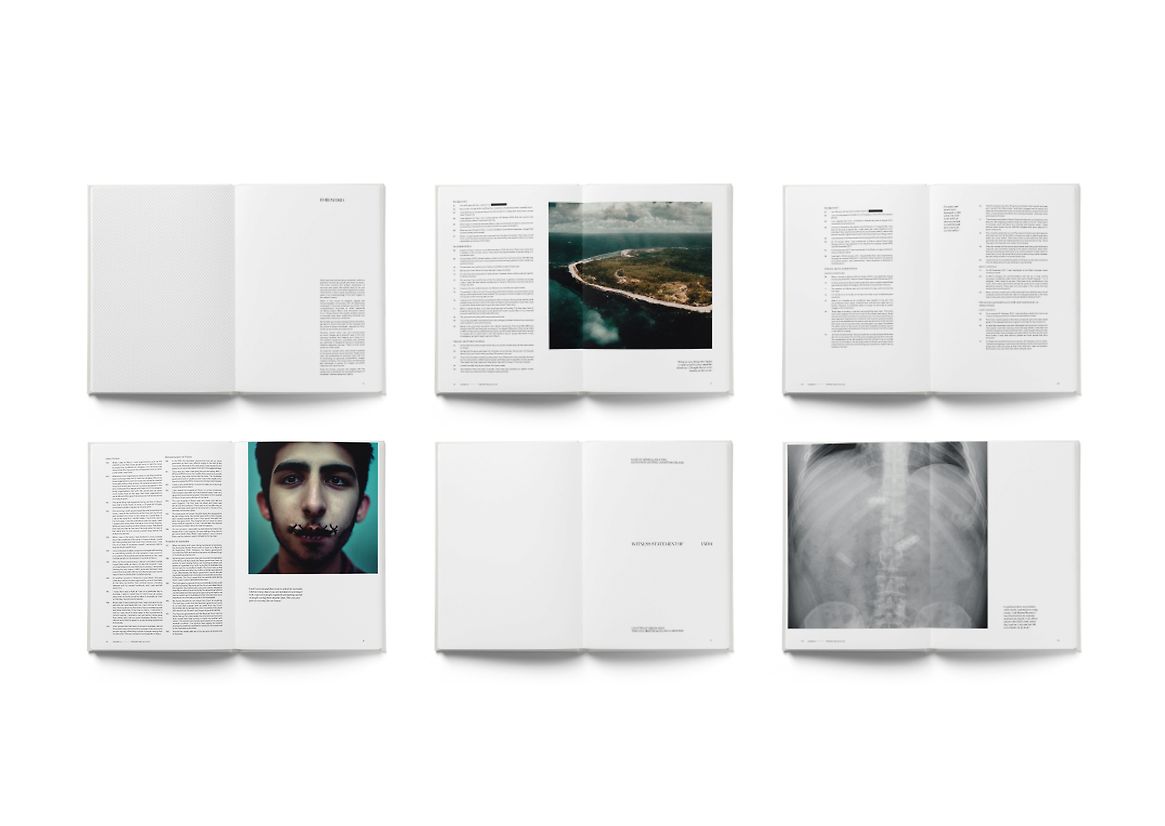Social Good Award
Howatson+Company 6 EXHIBIT A-i
-
Pou Auaha / Creative Director
Gavin Chimes -
Pou Rautaki / Strategic Leads
Dom Hickey, Sam Butcher
-
Ringatoi Matua / Design Directors
Caroline Gilroy, Reece Lawson
-
Ngā Kaimahi / Team Members
Zoe Finkelstein, Raff Gandrabur, Ellena Mills, Simon Merrifield, Holly Alexander, Chloe Schumacher, Brandon Nee, Madeleine Semit, Monika Domaschenz -
Kaitautoko / Contributor
Brogen Averill









Description:
For over 10 years refugees have been inhumanely detained by the Australian Government in the offshore processing centres on Nauru, Manus and Christmas Island. But their plight is largely invisible. Camera equipment, journalists and reporters are banned from these centres, and a policy of indefinite detention remains in place.
Australia’s leading social justice law firm, Maurice Blackburn, took on this inaction with a lawsuit on behalf of detainees against the Commonwealth of Australia, arguing that indefinite detention should be unlawful. Throughout this case, the firm interviewed survivors of detention and collected harrowing testimonies.
Unfortunately, in 2021, the class action was dismissed. The High Court of Australia found in a separate case, AJL20, that the indefinite detention of an individual, similar to those in DBE17, was lawful. This sadly meant the end of DBE17. But Maurice Blackburn still believed that these stories deserved to be heard. They just needed to find a way to do them justice.
We knew that without images of offshore detention, it would be difficult to bring these stories to public attention. Through history masterful pieces of photojournalism have not only exposed injustice; they have incited change. But offshore detention remained imageless, and hence invisible.
Enter Exhibit A-I.
Using 300 hours of interviews Maurice Blackburn had conducted with refugees, documenting the atrocities they faced in offshore detention, we worked with AI technicians and survivors themselves to generate the first visual evidence of their experiences. Every detail was made as accurate as possible, from the colour of the tents to the subjects’ facial expressions, and photojournalists were consulted to guide composition and image quality.
The statements and images were compiled into a book, which was submitted to members of Australian Parliament and used in one-to-one conversations with policymakers. This book was designed to reflect the gravity of the information it contained, with a buckram-coated cover, perfect binding and consideration of stock and the physical weight of the book. The typography combinations and reduced palette also reflected that of a serious legal publication.
The book was also sent to journalists, garnering worldwide attention – within one week, already 334 pieces of coverage were created, with earned media value of +$2.5 million and over 340 million people reached. The general public can also access the images in OOH, exhibitions and online, as well as integrated into stock libraries to sit alongside real photojournalism.
Australia’s Minister for Immigration has received the book and is now evaluating the evidence. This will be our real measure of success; if the evidence doesn’t just help the public bear witness but is a tool for policy change.
Today Exhibit A-i exists as a permanent record of the atrocities faced in offshore detention. It is an ongoing act of healing for the survivors who bravely shared their stories so that one day similar stories won't occur again.
Visit exhibitai.com.au
Judge's comments:
A stunning example of how AI technology can be put to good use in the right hands giving hope that new technologies in design can give authentic voices where images are not always available. Technology mixed with human craft achieving something extraordinary.